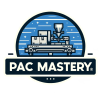Key Takeaways
| Key Point | Details |
|---|---|
| Machine Types | Automatic, Semi-Automatic, Manual |
| Technological Innovations | IoT integration, automation, precision engineering |
| Choosing the Right Machine | Consider volume, oil viscosity, container type |
| Top Brands | Names and comparison of leading manufacturers |
| Safety and Compliance | Features ensuring industry standard compliance and safety |
Introduction
The packaging of oil—whether for culinary, industrial, or cosmetic applications—demands precision, efficiency, and innovation. As part of our mission at PacMastery, we focus on providing cutting-edge technology to revolutionize the packaging process. This article explores the essentials of oil packing machines, highlighting the latest technological innovations and offering guidance on selecting the right machine for your needs.
Understanding Oil Packing Machines
What is an Oil Packing Machine?
Oil packing machines are designed to fill bottles, cans, and other containers with oil efficiently and accurately, ensuring products are ready for distribution with optimal quality. These machines vary widely in terms of automation and features, catering to different scales of production and types of oils.
Types of Oil Packing Machines
- Automatic Machines: Ideal for high-volume production, these machines handle all aspects of oil filling and packaging without manual intervention.
- Semi-Automatic Machines: These require minimal human assistance and are suitable for medium-scale operations.
- Manual Machines: Best suited for small-scale or artisanal projects where precision and customization are key.
Advanced Features of Modern Oil Packing Machines
Technological Innovations
Today's oil packing machines incorporate advanced technologies such as IoT (Internet of Things), which allows for real-time monitoring and control of the packing process, ensuring high efficiency and minimal downtime.
Machine Specifications and Capabilities
Modern machines offer high-speed operation and can be customized for various container sizes and oil viscosities. Key features include precision filling systems, automated cap placement, and integrated quality control systems.
Safety and Compliance Features
Ensuring the safety of both the product and the operators, these machines are built to comply with the latest industry safety standards. Features include emergency stop functions, shields, and alarms to prevent accidents.
Selecting the Right Oil Packing Machine
Factors to Consider
Choosing the right machine involves understanding your production needs. Key considerations include:
- Production Volume: Assess your daily, weekly, and monthly output needs.
- Oil Viscosity: Different machines handle various oil viscosities, from thin essential oils to thick lubricants.
- Container Type: The machine must be compatible with your specific container shapes and sizes.
For more information on how to streamline your packing processes, explore our comprehensive guide on selecting the ideal oil packing machine.
This section provides a foundational understanding of oil packing machines, their functionalities, and the advanced features that can significantly enhance your production line's efficiency and output. In the next section, we'll delve into expert tips and common challenges in optimizing machine operations.
Operational Insights from Industry Experts
Expert Tips on Optimization
To maximize the performance of your oil packing machines, experts in the field recommend:
- Regular Maintenance: Routine checks and servicing to prevent breakdowns and extend the machine's lifespan.
- Optimal Settings Adjustment: Tailoring machine settings to match specific oil types and container specifications to ensure precision.
- Employee Training: Ensuring operators are well-trained in both the technical and safety aspects of the machine operations.
Common Challenges and Solutions
Despite the advanced technology, users may encounter several common issues:
- Clogging and Jamming: Regularly clean nozzles and replace filters to prevent clogs. Consider machines with easy-to-clean features.
- Mechanical Wear: Use high-quality parts and schedule regular maintenance checks to reduce wear and tear.
- Inconsistent Filling Levels: Implement sensors and automated feedback systems to monitor and adjust fill levels in real time.
Economic Impact of Efficient Oil Packing
Cost-Benefit Analysis
Investing in a high-quality oil-packing machine can significantly reduce waste, increase output, and minimize labor costs. The initial investment is often offset by long-term savings and increased product quality.
Return on Investment (ROI) Projections
Businesses that upgrade to automated oil packing systems typically see a return on investment within 1-2 years, depending on the scale of operations and the efficiency gains.
Conclusion
As we continue to innovate and improve our oil packing solutions at PacMastery, the emphasis is always on enhancing efficiency, ensuring product quality, and maximizing operational safety. Understanding the types of machines available, along with their features and benefits, will empower you to make informed decisions that can significantly impact your business's productivity and profitability.
For a deeper dive into our packing solutions and to see how our machines can be integrated into your existing systems, visit our advanced solutions in oil packing.
By embracing these advanced technologies and leveraging expert advice, you can revolutionize your oil packaging processes and drive your business toward greater success and sustainability.




One Response
We are a group of volunteers and starting a new scheme inn ourr
community. Your web site provided us with valuable information to
work on. You’ve done a formidable joob and our entire community
will be grateful to you. https://lvivforum.pp.ua/